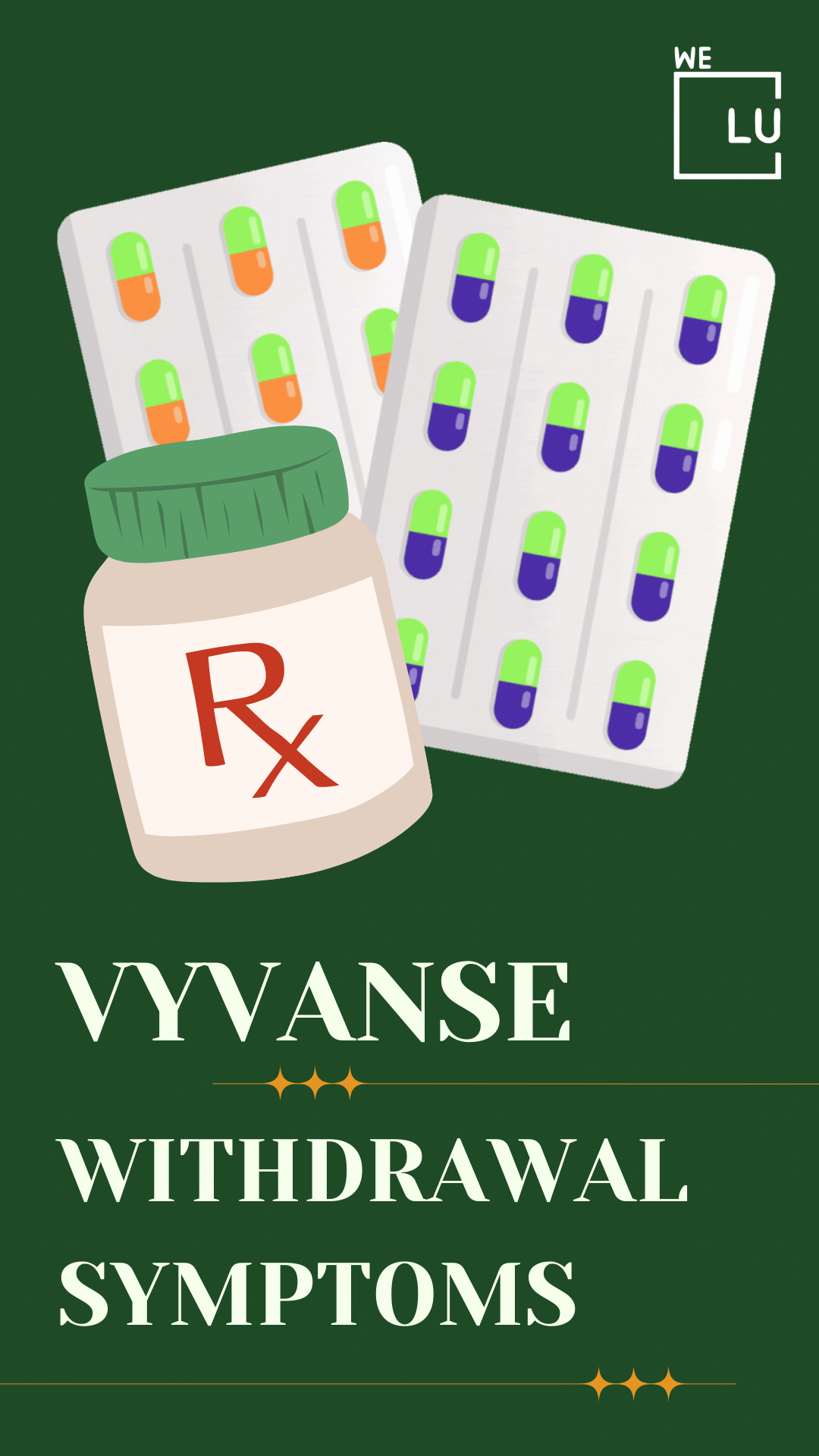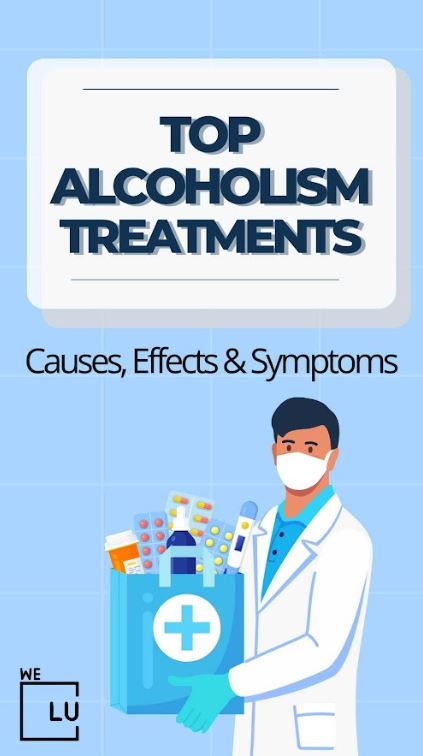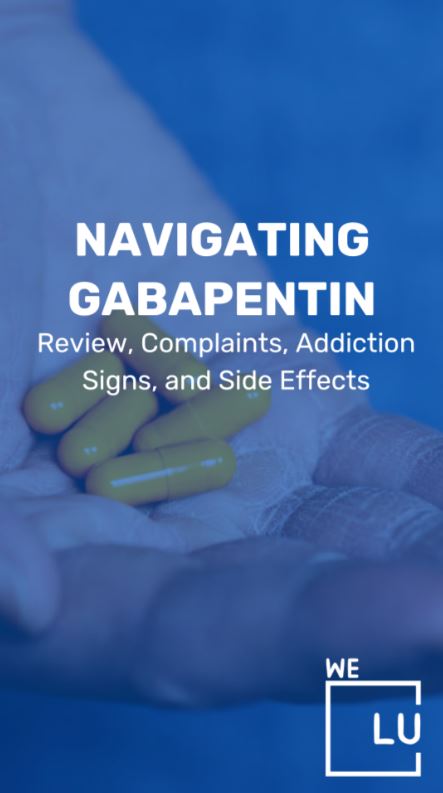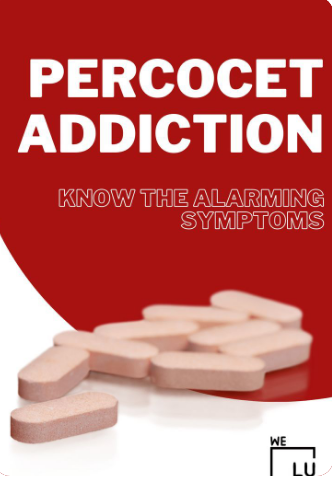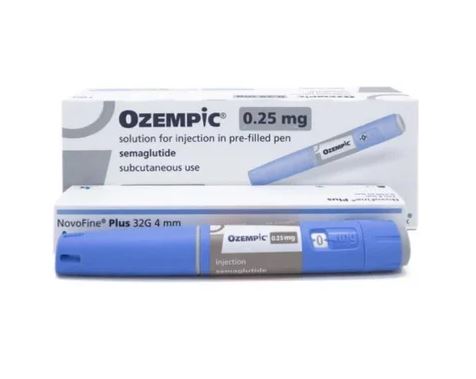How to Identify Crack Cocaine
Crack cocaine is an unclean, but very potent, form of cocaine. The drug is made through a complex process involving baking soda, which results in crystalline “rocks.” These are smoked, unlike powdered cocaine, which is commonly snorted. The high resulting from crack cocaine groups in faster than with powdered cocaine, but it also goes away within 15 minutes. Because of this prompt onset and dispersal, people who abuse crack cocaine are more possible to struggle with dependence on the drug. Although numerous people know the words crack cocaine and crack, they may not know how to determine the drug.
What Does Crack Look Like?
The process of turning cocaine into crack cocaine produces crystals, called “rocks.” These range in color from clear-white or opaque white to off-white or yellow. They vary in size and shape.
Changes in color may be related to adulterants, including caffeine, sugar, lactose, or other drugs like levamisole, which have been added to the rocks. Sometimes, additives are used to increase the potency of the drug or mimic its effects. In other cases, they are mixed with the drug just to bulk up the weight or appearance, so the dealer can sell them at a higher price to people who think they are getting more crack.
Adulterants like caffeine, sugar, lactose, or other medications like levamisole that have been added to the rocks may be the cause of color changes. A drug’s strength may occasionally be increased or its effects may occasionally be mimicked using additions. In other instances, they are included with the drug just to add weight or bulk out the appearance, allowing the dealer to sell them at a higher price to customers who mistakenly believe they are receiving more crack.
What Does A Bag Of Crack Look Like?
Since the look, smell, and taste of cocaine can vary greatly, it can be helpful to be able to identify cocaine use by the paraphernalia that a person has. First, cocaine is usually sold in small plastic bags that can be found online or at specialty stores. These resealable bags look similar to your standard sandwich bag, but they are much smaller. Sometimes, the bags even have designs or pictures on them. Someone who has several of these baggies in their room or in their belongings may be using cocaine.
Other types of cocaine-related paraphernalia may vary depending on how a person is using the drug. Someone who snorts cocaine may have a razor blade, cut-off straws, and a small mirror or flat surface with powdered residue on it. Someone who smokes cocaine may have aluminum foil, a lighter, a straw, or a small metal pipe with a hole at the top. Lastly, someone who injects cocaine may have tourniquets, spoons with bent handles, syringes, and lighters.
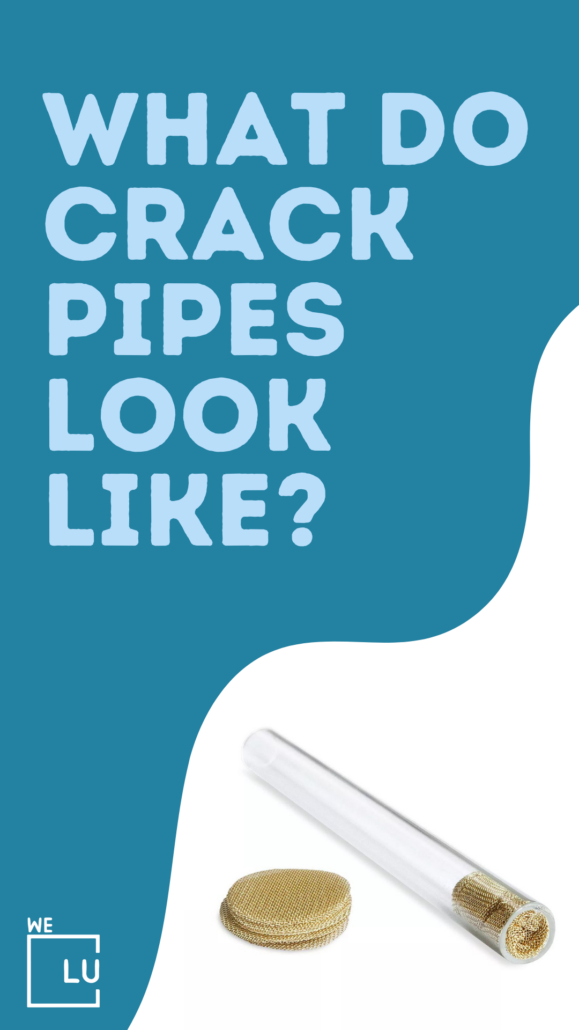
Unlike powdered cocaine, which is commonly snorted, the substance is produced by a complex process utilizing baking soda, resulting in crystalline “rocks” that are smoked.
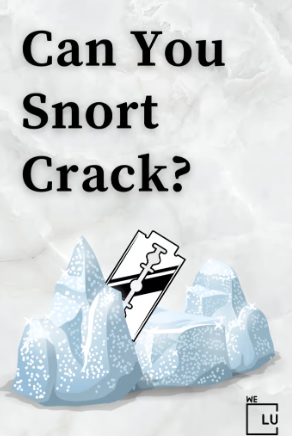
Crack cocaine is a highly addictive and powerful stimulant that is derived from powdered cocaine using a simple conversion process.
Skip To:
Learn More:
Get Help. Get Better. Get Your Life Back.
Searching for Accredited Drug & Alcohol Rehab Centers Near You? Or Mental Health Support?
Even if you have failed previously, relapsed, or are in a difficult crisis, we stand ready to support you. Our trusted behavioral health specialists will not give up on you. Call us when you feel ready or want someone to speak to about therapy alternatives to change your life. Even if we cannot assist you, we will lead you wherever you can get support. There is no obligation. Call our hotline today.
FREE Addiction Hotline – Call 24/7Crack Cocaine Addiction Statistics
In US Federal courts in 2007, 5,477 individuals were found guilty of crack cocaine-related crimes. More than 95% of these offenders had been involved in crack cocaine trafficking. Learn about crack cocaine addiction statistics in the U.S., from the demographics and age groups affected, to overdose and recovery rates.
252 people
An average of 252 people aged 12 and older used crack cocaine for the first time every day.
Source: SAMHSA
778,000 people
In 2019, 778,000 people aged 12 and older reported using crack cocaine in the past year.
Source: SAMHSA
16,000 people
In 2020, roughly 16,000 people died from a cocaine overdose.
Source: NIDA
Crack Cocaine Drug Facts
What is Crack Cocaine?
Crack cocaine is a highly addictive and powerful stimulant derived from powdered cocaine using a simple conversion process. Crack emerged as a drug of abuse in the mid-1980s. It is abused because it produces an immediate high and because it is easy and inexpensive to produce–rendering it readily available and affordable.
How is it Produced?
Crack is produced by dissolving powdered cocaine in a mixture of water, ammonia, or sodium bicarbonate (baking soda). The mixture is boiled until a solid substance forms. The solid is removed from the liquid, dried, broken into chunks (rocks) and sold as crack cocaine.
What Does it Look Like?
Crack typically is available as rocks. Crack rocks are white (or off-white) and vary in size and shape.
How is Crack Abused?
Crack is nearly always smoked. Smoking crack cocaine delivers large quantities of the drug to the lungs, producing an immediate and intense euphoric effect.
Is Crack Cocaine Illegal?
Yes, crack cocaine is illegal. Crack cocaine is a Schedule II substance under the Controlled Substances Act. Schedule II drugs, which include PCP and methamphetamine, have a high potential for abuse. Abuse of these drugs may lead to severe psychological or physical dependence.
How is Crack Abused?
Crack is nearly always smoked. Smoking crack cocaine delivers large quantities of the drug to the lungs, producing an immediate and intense euphoric effect.
Cocaine Short-Term Effects of Cocaine
- Extreme happiness and energy
- Mental alertness
- Hypersensitivity to sight, sound, and touch
- Irritability
- Paranoia—extreme and unreasonable distrust of others
What are the Risks?
Cocaine, in any form, is a powerfully addictive drug, and addiction seems to develop more quickly when the drug is smoked–as crack is–than snorted–as powdered cocaine typically is.
In addition to the usual risks associated with cocaine use (constricted blood vessels; increased temperature, heart rate, and blood pressure; and risk of cardiac arrest and seizure), crack users may experience acute respiratory problems, including coughing, shortness of breath, and lung trauma and bleeding. Crack cocaine smoking also can cause aggressive and paranoid behavior.

Crack rocks are often smoked and have a unique appearance, smell, and taste from powdered cocaine that make them easy to identify.
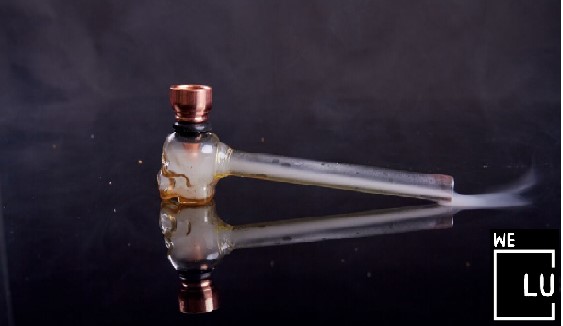
Crack pipes are a type of drug paraphernalia commonly used to smoke crack cocaine. They can be homemade or found at head shops.
What Does Crack Pipe Look Like?
Crack pipes typically resemble tiny glass “chillum” pipes. Crack pipes and other cocaine paraphernalia can be purchased in some stores since they are not strictly illegal. Crack pipes could also be manufactured at home. People who use crack may construct a crack pipe from certain common items. If you are worried that a loved one is abusing this drug, it’s critical to know what to look for.
Crack pipes usually have a tube-like shape and include a glass stem and a mouthpiece. They are often blackened and burnt-looking on one end if they have been used.
The mouthpiece of a cracked pipe can sometimes be removed and kept by each person to avoid sharing pipes.
Crack pipes usually include some sort of filter in between the mouthpiece and the “bowl” of the pipe, where the crack cocaine goes. Filters prevent pieces of molten-hot crack cocaine from dislodging and burning the person’s mouth or throat.
What Does A Crack Pipe Smell Like?
Anecdotally, many claims that the substance smells like burnt rubber or plastic when it is burning. Crack pipes won’t smell like anything if they have not been used. Once they are used, they will have a burnt, smoky smell. They might smell slightly sweet. Although it is distinctive, people who are unfamiliar with most intoxicating drugs do not know the difference between the smell of crack cocaine and the smell of a meth lab. Either can be dangerous, so it is important to report suspected labs and chemical-like smells to 911 immediately.
Pure cocaine will have a sweet, floral smell. However, due to the complex cocaine extraction process as well as the cutting agents found in cocaine that is sold on the streets, it usually has an underlying chemical or metallic smell to it. Some chemicals that are often used to manufacture cocaine have distinct smells that can help people identify the substance.
- Gasoline
- Kerosene
- Diesel
- Carbonate salt
- Sulfuric acid
- Ammonia
- Potassium permanganate
- Caustic soda
What cocaine smells like may also vary depending on the method of administration a person uses. Someone who snorts cocaine will probably notice a chemical or metallic smell, but someone who smokes the drug may smell burnt plastic or rubber.

Get Your Life Back
Find Hope & Recovery. Get Safe Comfortable Detox, Addiction Rehab & Mental Health Dual Diagnosis High-Quality Care at the We Level Up Treatment Centers Network.
Hotline (877) 378-4154Crack Addiction: 8 Signs Your Loved One Is Using
1. The presence of the drug. Would you recognize a crack if you saw it in your loved one’s home? It’s a type of cocaine that comes in the form of small, rock-like crystals that are various shades of white.
2. Crack paraphernalia. Users smoke crack, often from a narrow glass or metal pipe that may have a round bulb at the end, Some create makeshift pipes with household items. These items can include:
- Soft drink cans
- Glass bottles
- Plastic water bottles
- Lightbulbs
- Empty asthma inhalers
You may notice black burn marks on any object that has been used to smoke crack.
3. Extreme bursts of energy. Crack is a type of drug called a stimulant, which means someone who’s high on it could have bursts of energy that are much more excessive than normal. Your loved one might:
- Talk rapidly
- Act erratic or aggressively
- Seem anxious or on edge
The high from smoking crack can last about five to ten minutes,. But it can be more intense than the high from snorting powder cocaine.
4. Fatigue or changed sleep habits. When the effects of the crack wear off, the extreme energy gives way to exhaustion. Your loved one may seem extremely tired and sluggish, and they could even sleep for days.
5. Appetite changes. Your loved one may devour food incredibly fast, or they may completely lose their appetite. If they’re not eating, you may notice that they’re quickly losing weight.
6. Overdose. This is a medical emergency. Symptoms can include:
- Enlarged pupils
- Chest pain
- Seizures
- Hallucinations (seeing or hearing things that aren’t there)
If your loved appears to be having any of these symptoms, call 911 right away. They could be having a heart attack, stroke, or another life-threatening problem.
7. Oral health problems. One of the most obvious signs a person is suffering from a crack cocaine addiction is a rapid decline of oral health. Crack use can cause:
- Bleeding in the mouth
- Gum recession
- Rapid tooth decay
8. Withdrawal symptoms. A person who’s addicted to crack can have uncomfortable or dangerous symptoms when they stop taking it. These symptoms can include:
- Muscle pain
- Diarrhea and fever
- Depression or anxiety
- Suicidal thoughts
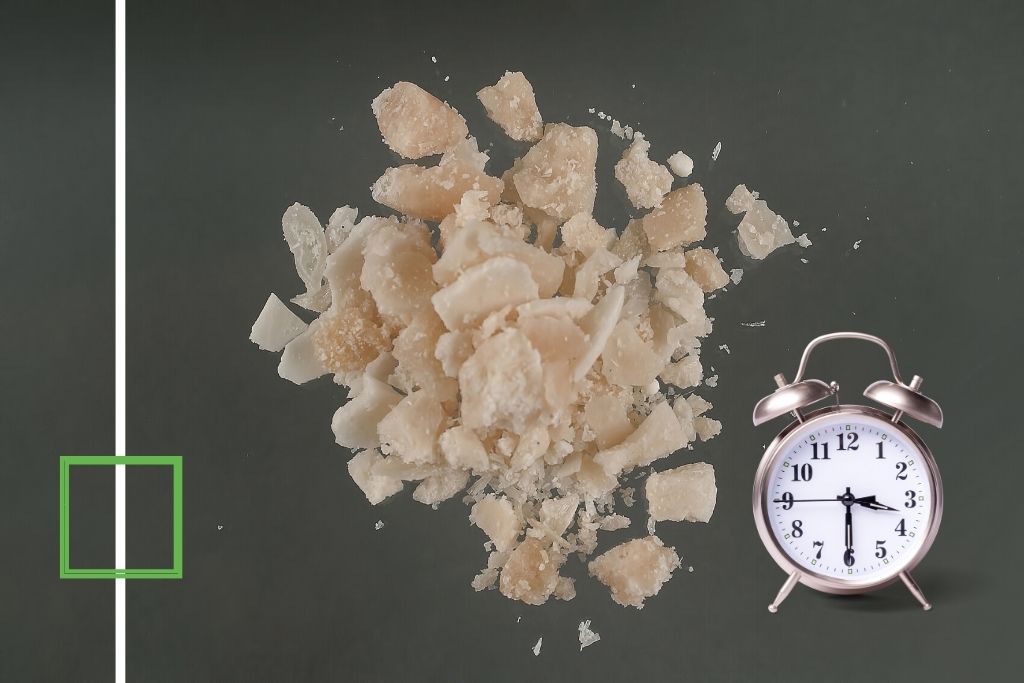
What Do Crack Addicts Look Like?
Like alcoholics and marijuana users, crack addicts are subject to widely-held stereotypes that are largely inaccurate. The Dave Chappelle Show represented this crack stereotype perfectly. Chappelle’s portrayal was a poor, African-American man living on the streets who couldn’t get sufficient crack.
In reality, the portrayal of a crack addict typically seen in movies or television is largely inaccurate. Inaccurate perceptions of crack cocaine users are racially motivated. Factually, more Caucasians use crack than African-Americans in the United States.
There is also a widely-held belief that cracks users spend all day hunting down their next high. Rather, a new scientific study shows that a crack addict can temporarily suppress an obsession to make sound financial decisions.
Cocaine and crack are dangerous, addictive drugs that can lead to serious side effects including sudden cardiac death, brain seizures, heart attack, and stroke. No drugs are approved to rapidly reverse the cocaine overdose itself or to treat cocaine addiction. Counseling is the mainstay of treatment.
Seeking out cocaine crack is a sign of addiction – not just because an addict desires it, but because the addict likes the drug even though it is badly obvious that the habit has generated a lot of problems. For most people, breaking a habit when the hindrances outweigh the advantages is a logical course of action. For an individual that is addicted to a substance, considering that absolutely and objectively is not always easy.
Read on to learn more about crack addictions. Explore common symptoms of crack usage, its long-term impact on the body, and what We level Up treatment options are available.
First-class Facilities & Amenities
World-class High-Quality Addiction & Mental Health Rehabilitation Treatment
Rehab Centers TourRenowned Addiction Centers. Serene Private Facilities. Inpatient rehab programs vary.
Addiction Helpline (877) 378-4154Proven recovery success experience, backed by a Team w/ History of:
15+
Years of Unified Experience
100s
5-Star Reviews Across Our Centers
10K
Recovery Success Stories Across Our Network
- Low Patient to Therapist Ratio
- Onsite Medical Detox Center
- Comprehensive Dual-Diagnosis Treatment
- Complimentary Family & Alumni Programs
- Coaching, Recovery & Personal Development Events
What Do Crack Babies Look Like?
What’s a crack baby?“Crack baby” was a term coined to describe children who were exposed to crack (freebase cocaine in smokable form) as fetuses; the concept of the crack baby emerged in the US during the 1980s and 1990s in the midst of a crack epidemic. Other terms are “cocaine baby” and “crack kid”.
Does crack use during pregnancy cause “crack babies”? No. The myth of the “crack baby” has persisted for decades, but studies have consistently concluded that prenatal exposure to crack cocaine, which happens when a woman smokes crack cocaine while pregnant, has little or no effect on the long-term development of a child. Exposure to cocaine (powder or crack) can slow fetal growth but the development of the brain and body catches up as these children grow up. It has not, as widely thought in the 80s and 90s, produced “joyless” or “unmanageable” children.
Poverty and the harms and stresses associated with it have a more significant impact on the physical and emotional development of a child than pre-natal exposure to cocaine. Children from nurturing and cognitively stimulating environments perform better, regardless of cocaine exposure.
What Does Cocaine Feel Like?
As a stimulant drug, cocaine increases vital body functions such as heart rate, breathing, and body temperature. It gives users a strong jolt of energy that makes them more confident, talkative, and awake. Knowing the short-term side effects of the drug can help you identify a cocaine user
Short-term effects include:
- Increased happiness and energy
- Mental alertness
- Dilated pupils
- Nausea
- High blood pressure
- Fast or irregular heartbeat
- Restlessness
- Irritability
- Talkativeness
- Hypersensitivity to light, sound, and touch
- Speaking quickly
- Paranoia
- Anxiety
- Tremors or muscle twitches
The effects of cocaine appear almost instantly after consuming the drug and can last for a few minutes to an hour or more depending on the method of administration. For example, snorting cocaine can produce a high that lasts 15-30 minutes while smoking it will only produce a short high, lasting 5 to 10 minutes.
Short-term physiological effects of cocaine use include constricted blood vessels; dilated pupils; and increased body temperature, heart rate, and blood pressure. Large amounts of cocaine may intensify the user’s high but can also lead to bizarre, erratic, and violent behavior. Some cocaine users report feelings of restlessness, irritability, anxiety, panic, and paranoia. Users may also experience tremors, vertigo, and muscle twitches.
Is Crack Cocaine Addictive?
Cocaine is a schedule II controlled substance in the United States, which means it has a high risk of abuse. Long-term crack cocaine use can change the structure and function of the brain, which increases the risk of developing a substance use disorder (SUD).
According to the National Institute on Drug Abuse (NIDA), more than half the people seeking cocaine addiction treatment use multiple substances. This is known as polydrug abuse and increases the risk of long-term health problems and overdose.
Professional addiction treatment centers offer comprehensive care from experienced professionals. Detox, residential treatment, and aftercare programs can help you develop the skills necessary to maintain long-term recovery.
Northeast Addictions Treatment Center offers behavioral therapies and other forms of evidence-based treatment that can help you prevent relapse and improve your well-being. If you or a loved one would like to learn more about our treatment programs, please call our helpline today.
In an individual who is addicted, his or her cocaine use evolves into an addiction and powerful desire that can cause:
- Loss of control over his or her life.
- A willingness to do anything to get more cocaine.
- Spending a tremendous amount of money on his or her habit.
- A loss of interest in friends, family, and social activities.
- A need to take the drug just to feel “normal.”
Effects of Crack Cocaine
Crack cocaine affects the central nervous system. It acts as a stimulant to create a euphoric high in users. Side effects of crack cocaine use include constricted blood vessels, increased heart rate, and blood pressure, restlessness, irritability, and anxiety. The effects that crack cocaine has on respiration and the heart mean that users are at substantial risk of having seizures or going into cardiac arrest, which can be followed by respiratory arrest and sudden death. Crack cocaine abuse is dangerous enough, but when it is combined with another substance, like alcohol, the potential consequences can be more than an individual’s body can handle.
Crack users will occasionally put the rocks into their mouths to check for purity. The taste is reportedly bitter but can taste like chemicals if there are high amounts of cutting agents and sometimes has a salty taste due to the alkaloids used.
Drug dealers use various products to cut crack cocaine, some of which can be harmful. Pure cocaine is often heavily cut when making a crack in order to spread the amount of cocaine and increase profits. Read here to learn more about the cost of crack cocaine.
World-class, Accredited, 5-Star Reviewed, Effective Addiction & Mental Health Programs. Complete Behavioral Health Inpatient Rehab, Detox plus Co-occuring Disorders Therapy.
CALL (877) 378-4154End the Addiction Pain. End the Emotional Rollercoaster. Get Your Life Back. Start Drug, Alcohol & Dual Diagnosis Mental Health Treatment Now. Get Free No-obligation Guidance by Substance Abuse Specialists Who Understand Addiction & Mental Health Recovery & Know How to Help.

Cocaine Crack Withdrawal Symptoms
Symptoms of Cocaine Withdrawal?
Acute cocaine withdrawal symptoms may include:3
- Anxiety
- Irritability
- Depression
- Poor concentration
- Slowed thoughts and movements
- Fatigue
- Changes in sleep patterns (e.g., hypersomnia, or increased sleeping)
- Increased appetite
- Cocaine cravings
- Paranoia
Though stimulation withdrawal does not usually affect intense physical signs (nor does it present immediate medical risks to a patient), some people may be at risk for transmitting significantly debilitating dysphoria (i.e., depression, overwhelmingly negative thoughts, and feelings). This deep dysphoric period could, in some cases, be associated with suicidal thoughts or attempts and could also lead to a patient relapsing on cocaine
Cocaine Overdose
An overdose is generally foregone by dilated pupils and sweating. Individuals who have overdosed may exhibit anxiety, aggression, seizures, rapid heart rate, chest pain, nausea, hallucinations, and/or stroke. Further, those with kidney problems or high blood pressure have a higher risk of fatal difficulties caused by smoking Crack Cocaine.
Cocaine Crack And Alcohol
Mixing crack cocaine and alcohol is like counting a wild card in an already dangerous situation. Abusing crack cocaine or alcohol can seriously harm an individual when each substance is used alone. The results of mixing crack cocaine and alcohol, however, are not simply a cumulation of the highs created by each substance. As numerous people who are addicted to crack cocaine and alcohol realize, mixing the two substances actually reproduces the results, creating psychological and physical circumstances that are greater than the sum of the parts.
Crack vs Meth
Crack and methamphetamine (meth) are both highly addictive stimulant drugs that affect the central nervous system. However, they are different in terms of their chemical makeup, method of use, and effects on the body.
Crack is a form of cocaine that has been processed into a rock crystal, which is smoked. It produces a short-lived, intense high that can cause feelings of euphoria, increased energy, and heightened alertness. However, it can also cause paranoia, anxiety, and aggressive behavior. Crack is highly addictive, and its use can lead to long-term health problems such as heart attack, stroke, and respiratory failure.
Methamphetamine, on the other hand, is a synthetic drug that can be smoked, snorted, injected, or taken orally. It also produces a powerful high that can last for several hours and cause similar effects to crack, such as increased energy and euphoria. However, meth can also cause serious health problems such as tooth decay, skin sores, and organ damage. Long-term use of meth can lead to addiction, psychosis, and other mental health problems.
What’s the Difference Between Crack and Meth?
Crack and methamphetamine (meth) are both powerful stimulant drugs that have similar effects on the body and mind, but there are some differences between the two:
- Chemical composition: Crack is a form of cocaine that has been processed into a rock crystal, while methamphetamine is a synthetic drug that is made from a combination of chemicals.
- Method of use: Crack is typically smoked, while meth can be smoked, snorted, injected, or taken orally.
- Duration of effects: The effects of crack typically last for about 5-15 minutes, while the effects of meth can last for several hours.
- Physical effects: Both drugs can cause physical effects such as increased heart rate, blood pressure, and body temperature, but meth is more likely to cause long-term damage to the body, including tooth decay, skin sores, and organ damage.
- Psychological effects: Both drugs can cause psychological effects such as euphoria, increased energy, and heightened alertness, but meth is more likely to cause paranoia, hallucinations, and other mental health problems.
Experience Transformative Recovery at the We Level Up Treatment Center.
See our authentic success stories. Get inspired. Get the help you deserve.



Start a New Life
Begin with a free call to an addiction & behavioral health treatment advisor. Learn more about our dual-diagnosis programs. The We Level Up treatment center network delivers various recovery programs at each treatment facility. Call to learn more.
- Personalized Care
- Caring Accountable Staff
- World-class Amenities
- Licensed & Accredited
- Renowned w/ 5-Star Reviews
We’ll Call You
Crack Addiction Treatment & Rehab
Taking the step to seek healing is the best finding a person can make when they begin struggling with substance use conditions. People may be uncertain about entering a therapy program because they don’t think their situation is serious enough or something awful hasn’t occurred in their life yet. Any time is the right time to seek out help if you can’t handle your urges for using crack cocaine.
Cocaine Detox
Cocaine is one of the most addictive drugs in the world. Ever since the 1970s when the popularity of cocaine began to skyrocket, the drug has been a problem for law enforcement, treatment professionals, and families across the globe, according to the National Institute on Drug Abuse. Cocaine addiction causes problems that affect the individual as well as the community at large and is an issue that is being dealt with on a personal level as well as community, state, federal and international levels.
In order to overpower cocaine dependence, an individual must first fulfill detox. Cocaine detox is the first step in a complete cocaine rehab program. Detox helps the individual act past the primary health issues related to physical dependence upon the drug. Though you will likely be able to observe group therapy sessions and other forms of therapy during detox, the goal is to help you stabilize physically. Once you are feeling better, you will regain your energy and have the clarity needed for the work ahead in addiction treatment.
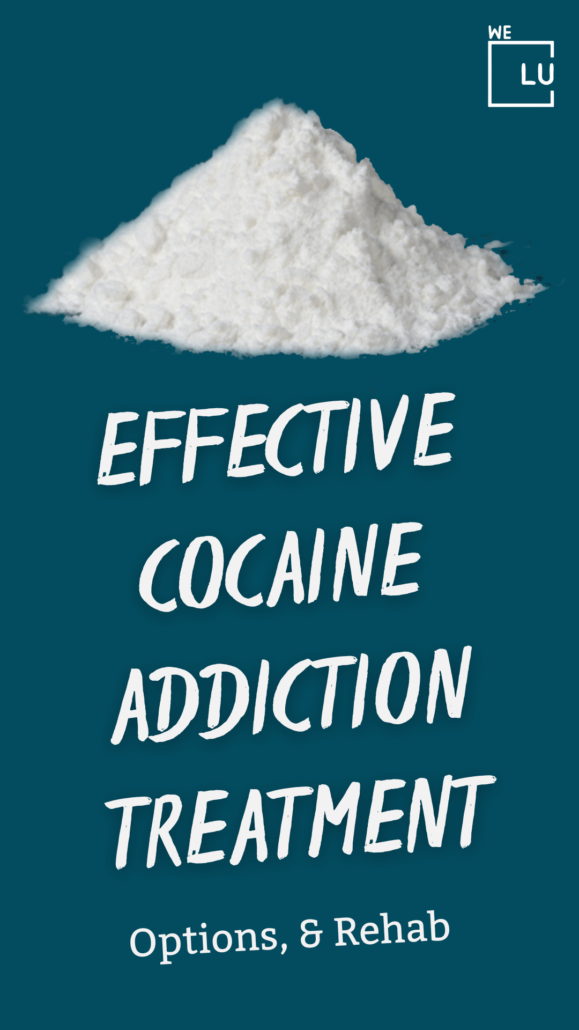
The modulation of the effect of alcohol use on crack cocaine depends on the moment when the drugs are consumed, and the use of alcohol before crack consumption is associated with characteristics that suggest a greater vulnerability to patterns of harmful crack use.. Having trouble with drug addiction? Contact We Level Up NJ today so you can get the best treatment possible!
Medication Assisted Treatments (MAT)
Medication-Assisted Treatments (MAT) for substance use and mental health disorders are commonly used in conjunction with one another. This includes the use of medications and other medical procedures. During your rehab, the staff from your treatment facility will help you identify what caused your addiction and teach you skills that will help you change your behavior patterns and challenge the negative thoughts that led to your addiction. Sometimes, the pressures and problems in your life lead you to rely on substances to help you forget about them momentarily.
Please, do not try to detox on your own. The detox process can be painful and difficult without medical assistance. However, getting through the detox process is crucial for continued treatment. We Level Up provide proper care with round-the-clock medical staff to assist your recovery through our drug addiction treatment program medically. So, reclaim your life, and call us to speak with one of our treatment specialists. Our counselors know what you are going through and will answer any of your questions.
Drug Rehab Near Me
Drug addiction is a condition that can cause significant health problems, such as an overdose. We at Level Up NJ rehab treatment & detox center can provide you, or someone you love, the tools to recover from this with professional and safe treatment. Feel free to call us to speak with one of our counselors. We can inform you about this condition and clarify issues like drug withdrawal symptoms. Our specialists know what you are going through. Please understand that each call is private and confidential.
PJ O’Brien Got His Life Back From Crack Addiction & Now Has A Loving Wife & Child During Sobriety Video
PJ O’Brien’s Addiction Recovery Story and Testimonial Video
“My name is PJ O’Brien.
I’m originally from Long Island, New York.
I have clean two years on October 4 of 2019.
My bottom was me smoking crack and eating chicken wings out of a dumpster for a month before I decided to get help from desperation for recovery.
Every day, you know, try to help out newcomers. I run a home group. I go to meetings every day and just never forget my worst days.
Got my life back. I got married, have a beautiful wife, and we just had our first child on August 31 that just passed.”
Does Addiction Rehab Work?
Longer stays in treatment frequently result in better outcomes. However, success can vary from person to person. Detox alone is rarely beneficial for long-term recovery. Does treatment work? Attending treatment increases a person’s chances of long-term recovery compared to not attending.
10 Popular “What Does Crack Look Like?” FAQs
-
How are Cocaine Cracks produced?
Crack is produced by dissolving powdered cocaine in a mixture of water and ammonia or sodium bicarbonate (baking soda). The mixture is boiled until a solid substance forms. The solid is removed from the liquid, dried, and then broken into chunks (rocks) that are sold as crack cocaine.
-
How is crack abused?
Crack is nearly always smoked. Smoking crack cocaine delivers large quantities of the drug to the lungs, producing an immediate and intense euphoric effect.
-
Who uses crack?
Individuals of all ages use crack cocaine–data reported in the National Household Survey on Drug Abuse indicate that an estimated 6,222,000 U.S. residents aged 12 and older used crack at least once in their lifetime.
-
What are the risks?
Cocaine, in any form, is a powerfully addictive drug, and addiction seems to develop more quickly when the drug is smoked–as crack is–than snorted–as powdered cocaine typically is.
In addition to the usual risks associated with cocaine use (constricted blood vessels; increased temperature, heart rate, and blood pressure; and risk of cardiac arrest and seizure), crack users may experience acute respiratory problems, including coughing, shortness of breath, and lung trauma and bleeding. Crack cocaine smoking also can cause aggressive and paranoid behavior.
-
What’s worse crack or meth?
in general, methamphetamine is considered to be more harmful than crack because it has a longer half-life, meaning that it stays in the body for a longer period of time, and can cause more long-term damage to the body and brain. Meth is also more likely to cause psychosis, hallucinations, and other mental health problems than crack.
-
Is crack and meth the same?
Is crack the same as meth? No, crack and methamphetamine (meth) are not the same. They are two different types of drugs with different chemical compositions and methods of use, although they both belong to the category of stimulant drugs.
Search We Level Up NJ “What Does Crack Look Like?” Topics & Resources
Sources
[1] National Institute of Drug Abuse/ NIDA Info Facts/ Drug and Cocaine
[2] U.S. Drug Enforcement Agency Fact Sheet on Cocaine
[3] “Crack Facts & Figures,” Office of National Drug Control Policy, 2008
[4] Cocaine | C17H21NO4 – PubChem (nih.gov) – National Center for Biotechnology Information (2023). PubChem Compound Summary for CID 446220, Cocaine.
[6] National Institute on Drug Abuse. (2016). What are the short-term effects of cocaine use?
[7] Substance Abuse and Mental Health Services Administration. (1999). Treatment for Stimulant Use Disorders.
[8] How is cocaine used? | National Institute on Drug Abuse (NIDA) (nih.gov)
[9] Substance Abuse and Mental Health Services Administration. (2018). Key Substance Use and Mental Health Indicators in the United States: Results from the 2017 National Survey on Drug Use and Health.
[10] Preston KL, Epstein DH, Cone EJ, Wtsadik AT, Huestis MA, Moolchan ET. Urinary elimination of cocaine metabolites in chronic cocaine users during cessation. J Anal Toxicol. 2002 Oct;26(7):393-400. doi: 10.1093/jat/26.7.393. PMID: 12422991.
